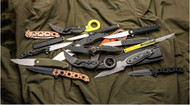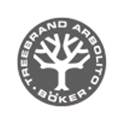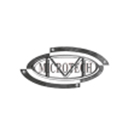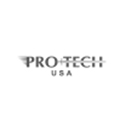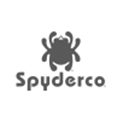Knife Blade Profile Guide: Knife Blade Profiles, Shapes, and Uses
16th Mar 2023
Whether you’re on the hunt for a new Spyderco pocket knife for EDC or need a new meat-processing Buck for the fall woods, being familiar with the different blade shapes and profiles, as well as what they are typically used for, can make you more proficient in your tool selection.
Here’s a high-level overview of the different common styles of knife blades.
Drop Point
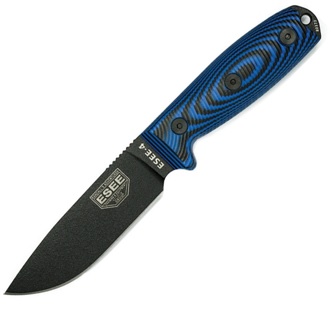
Arguably the most common blade profile, a drop point blade features a spine that slopes gracefully down (it “drops”) to meet the edge.
Drop point blades are common in hunting knives, survival and camping knives because they have sturdy points and are useful for a wide range of general utility and tasks from chopping to batoning to carving and food preparation.
Clip Point
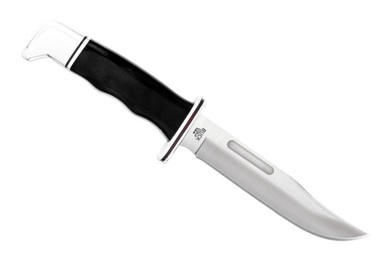
In a clip point blade, the end of the spine is “clipped” away, producing a swedge that meets the point. This creates a very fine point; many Buck knives feature clip point blade profiles.
The clip point is best for piercing and fine detail tasks, such as some carving applications. However, care must be taken, as clip point blades are very fragile and the tip may break when stressed.
Tanto Point
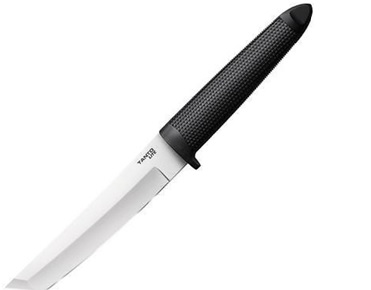
Tanto point blades can be either straight or slightly swept, and the grind of the blade near the point takes a sharp angle, raising a ridge at the point where the belly would curve to meet the point. This produces a very strong point that is excellent for piercing tasks. Many popular Cold Steel knives have tanto-style points.
Spear Point
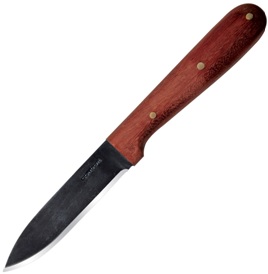
In a spear point blade, both the edge and the spine slope towards each other symmetrically, producing a point that is very strong, while still fine enough to be used for detail work like drilling, piercing, and carving.
Spear point blades are common on camp and survival knives because they are sturdy and widely applicable to a large number of tasks involving an edged tool like a knife.
Sheepsfoot
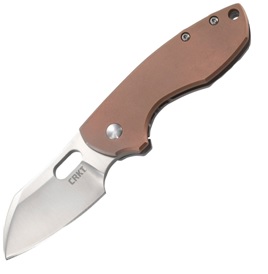
In a sheepsfoot blade, the spine of the knife curves down to meet the edge, which is usually very straight. This produces a very strong point - among the strongest points of all knives - making these knives excellent for chopping and carving, but poorly suited to piercing.
Wharncliffe
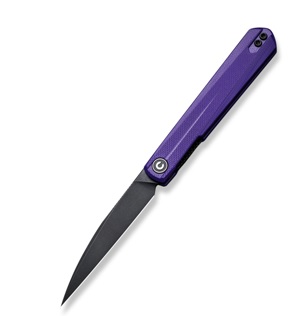
A Wharcliffe style blade is like a sheepsfoot blade in that the spine slopes to meet the tip, except in a Wharncliffe, or “wharnie,” the spine slopes gracefully starting at the handle instead of taking a dramatic downturn towards the tip. This gives the Wharncliffe-style configuration a finer point that is better for piercing than a sheepsfoot, but still relatively strong.
Guthook
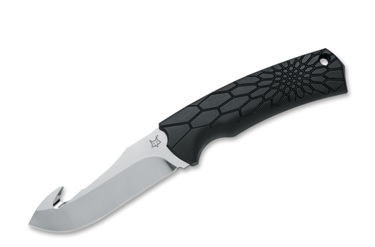
In a guthook blade, a section is removed from the spine of the knife, in which a sharpened hook is inserted into the spine. It is more of a feature than a blade profile.
The guthook is a feature with which hunters and outdoorsmen have a love-hate relationship. Some claim they are useful for skinning and gutting, while others hate them.
Spey Blade
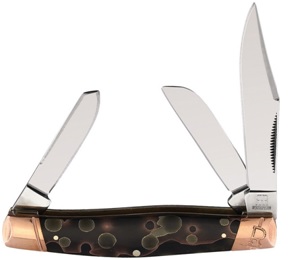
Common on pocket knives like Stockman-pattern folders, a spey blade typically features an edge and spine that are both relatively straight, taking sharp turns to meet each other about haflway, which results in a fairly blunt tip. (The blade on the left of the Rough Ryder Stockman pictured above is a spey blade.)
These were originally used by farmers to “spey” animals, but today they are mostly reserved for general utility.
Hawkbill/Talon
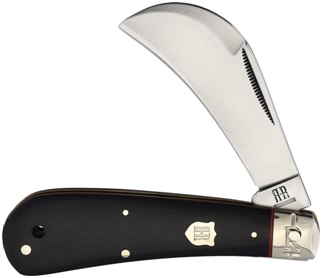
Hawkbill-style blades, also called talon style blades, are the central feature of Karambit knives, and feature an edge that curves forward, resulting in a point that is below the rest of the edge, and a spine that slopes forward to meet it.
Hawkbill-style blades are useful for pruning, harvesting, and other scenarios that require a draw cut. They are, however, difficult to sharpen and typically require a rod.
Recurve
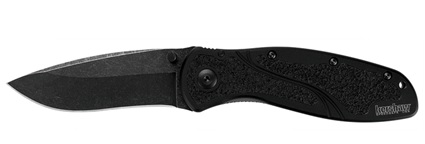
In a blade with a recurve profile, the edge slopes forward, away from the spine, before making a curve back in the opposite, upwards direction to meet the point.
This results in a blade that has more mass forward and a center of gravity farther away from the handle, making these knives suitable for chopping. However, blades with a recurved edge are, like hawkbill blades, difficult to sharpen and often require a rod.
Leaf Blade
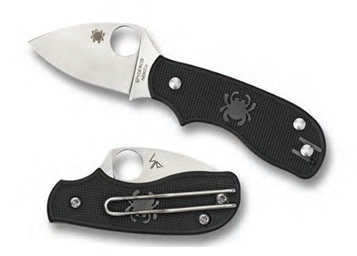
A leaf blade typically looks like a leaf; that is, it is wider at the base near the handle and tapers to a point. Leaf-bladed knives can have either straight or swept edges.
The leaf blade is a fixture of a Spyderco pocket knife. Most of them have very narrow shoulder regions that are humpbacked, become wide rapidly, and taper off to a point. This blade style is ergonomic as it creates a natural thumb ramp and is well balanced, and usually heavier towards the handle.
Straight Back
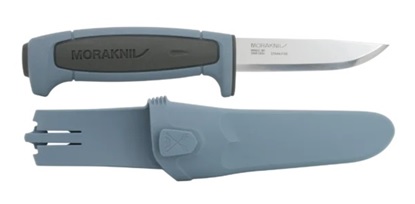
The straight back blade profile is just what it sounds like: it has a straight back and a slightly swept edge that curves up to meet the point. Straight back knives are common on Scandinavian style knives, such as those produced by Martiini and Mora. Like drop points and spear points, they are popular for most camp duties and can be used for everything from cleaning game to food prep, carving, and basic camp chores.
Needle Point
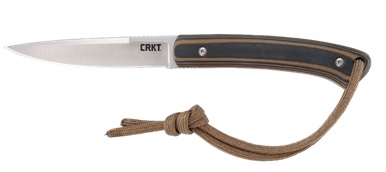
The needle point blade profile is fairly rare, and consists of a back and edge that taper to a very fine point - like a needle. Occasionally, there is no spine and the blade configuration is double-edged.
Needle point blades are optimized for penetration, but are still useful for light detail work like carving.
Trailing Point
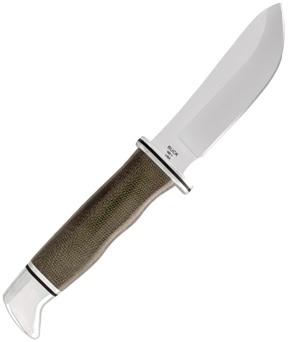
Trailing point blades consist of an edge that is swept towards the spine, and a spine with a sweep that corresponds to the curve of the edge, in such a fashion that the point of the knife lies at a position higher than the position of the spine where it meets the handle.
Many skinners feature a trailing point blade profile or a swept design, and this configuration is highly useful for skinning, caping, boning, filleting, and other game processing applications.
Need a New Cold Steel, Buck, Gerber, Kizer, or Spyderco Pocket Knife?
Here at White Mountain Knives, we carry a wide range of pocket knives that in an equally wide range of blade profiles and configurations, both fixed, and folding, for an equally wide array of applications.
Take a look through our collection and if you are looking for something specific, get in touch with us at WhiteMountainKnives@gmail.com.

